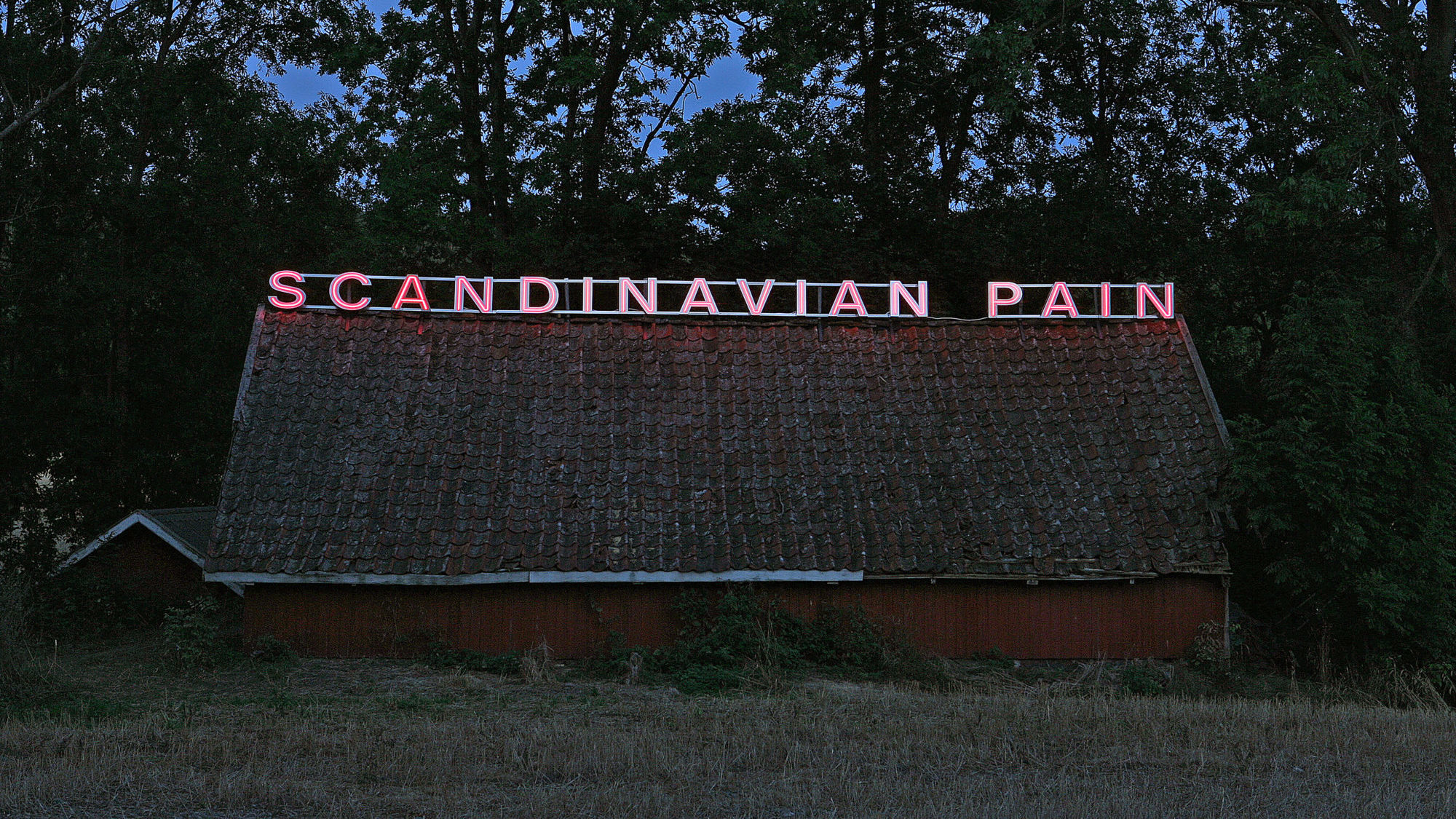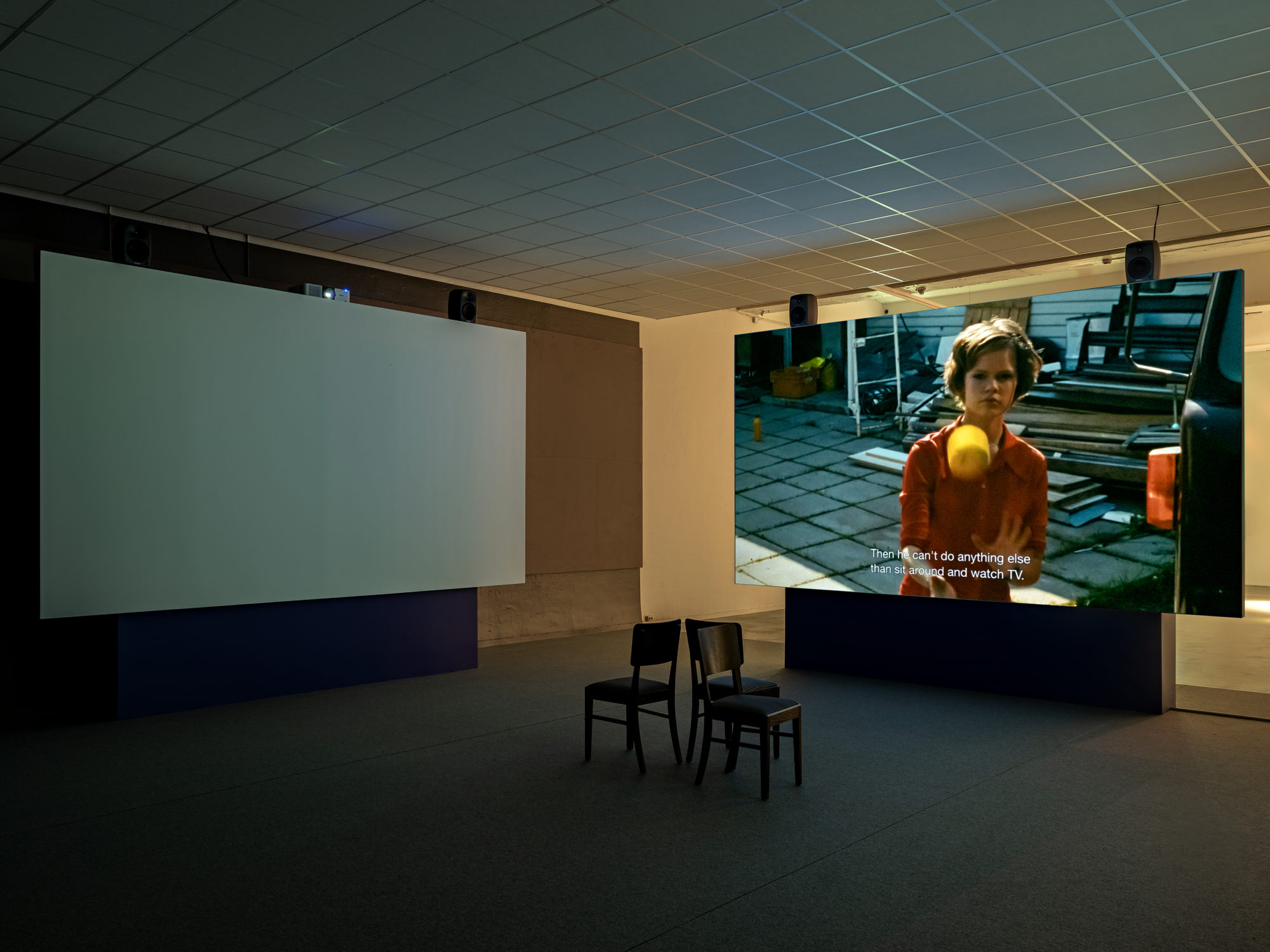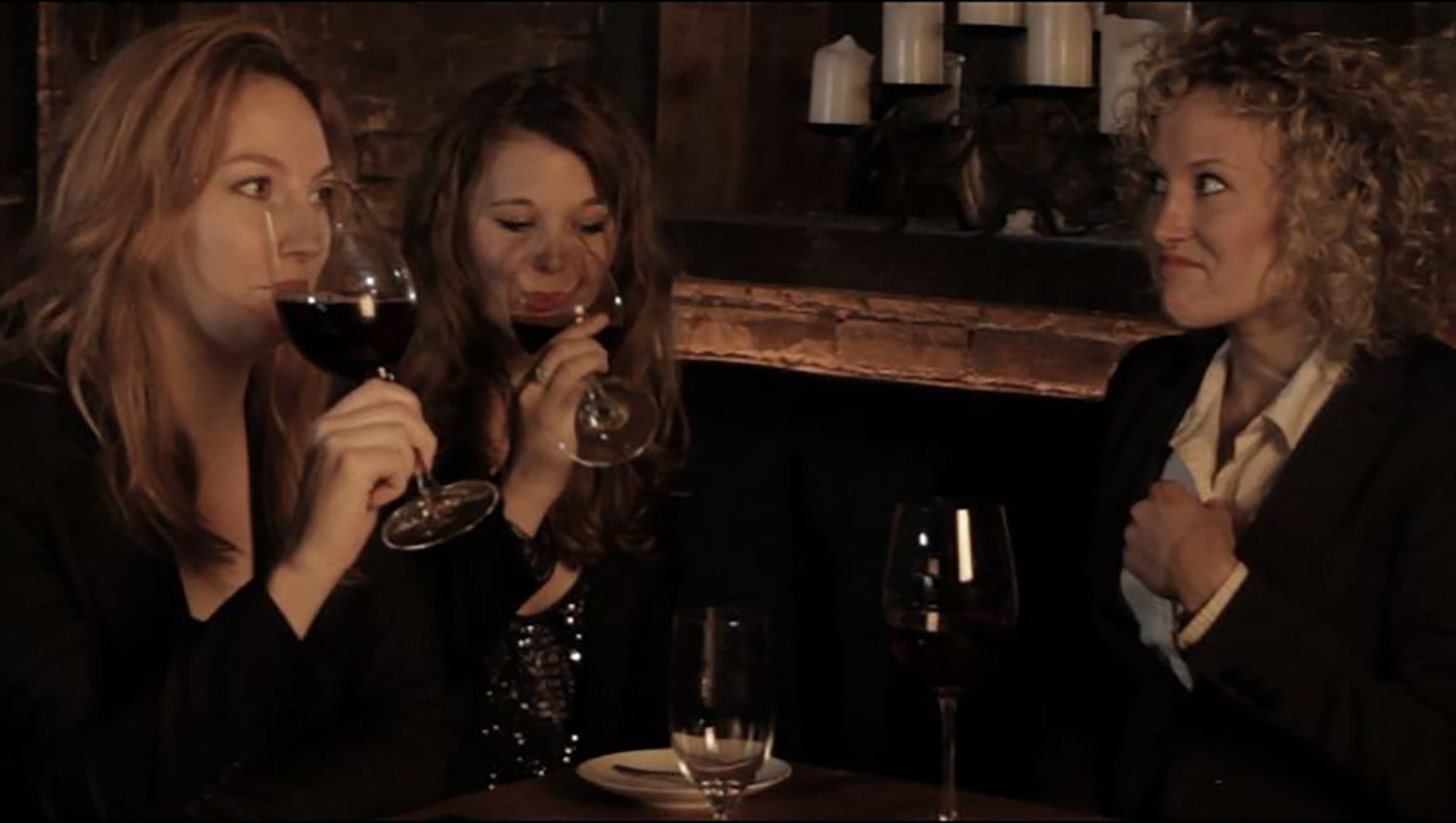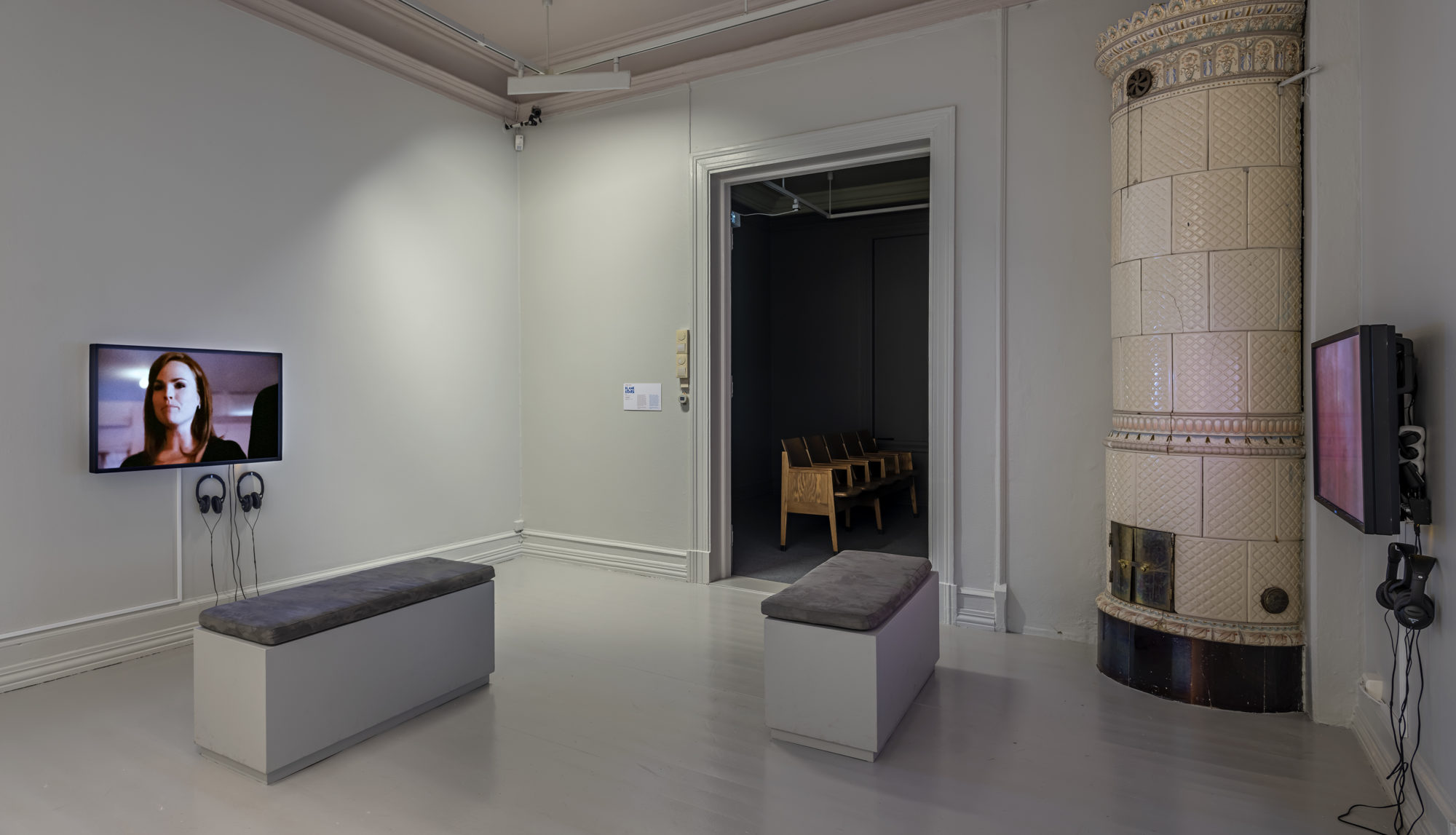MOMENTUM 10: The Emotional Exhibition

Ragnar Kajartansson, Scandinavian Pain, installation view, 2016 [photo: Terje Holms; courtesy of artist and Luhring Augustine, New York, and i8 Gallery, Reykjavik, and MOMENTUM 10]
Share:
With the title The Emotional Exhibition, MOMENTUM 10 avoided a curatorial maxim that all 29 artistic projects—shown in two main and several satellite venues of Moss, Norway—had to reflect. Already, when the Nordic biennial was founded in 1998, it was set against trending internationalism in the globalizing art world by establishing a biennial focused on a specific geographical region. Curator Marti Manen continued MOMENTUM’s idiosyncratic tradition by resisting the common thread of contemporary art—one of always moving forward and never looking back. More than half the biennial’s artists, of whom 17 come from Nordic countries, presented work that had been shown in previous editions. Some objects simply returned and were rearranged, others were rebuilt. Several artists changed and recontextualized their earlier work, whereas other projects reappeared in documentary form. The Emotional Exhibition can be understood as a mediative approach, rather than a curatorial one—one that cherishes a primary motivator of human beings: affective responses.
Scent scientist and artist Sissel Tolaas’ Molecule MOVX_015, a fragrance that the artist created for MOMENTUM 8, was painted on the same wall in the MOMENTUM Kunsthall as in 2015. Visitors could scratch the wall and smell an aroma intended to arouse the feeling of “Nordic isolation”—playing on the stereotype that Nordic people live in tiny cabins, isolated in sparsely populated landscapes. The olfactory aesthetic experience reverses the idea of perceiving art collectively. Smelling is an inwardly oriented physical experience, and individual bodies can react quite differently to certain smells. By using scent as an artistic medium, and specifically by producing a strangely unfamiliar smell such as Molecule MOVX_015, the artist performs isolation sensorially.
Eija-Liisa Ahtila, Today, 1996/97, 35 mm film installation, 10 minutes [photo: Vegard KIeven © Punkt Ø; courtesy of the artist and MOMENTUM 10]
Three artists who were featured at the first edition of MOMENTUM in 1998 participated again. Knut Åsdam rebuilt Psychasthenia 5, the cinema theater that he created for MOMENTUM 1. Eija-Liisa Ahtila’s interactive film installation Today (1996–1997)—featuring an intergenerational relationship, the development of which viewers can manually rearrange by editing the narrative—was again exhibited in the MOMENTUM Kunsthall. Olafur Eliasson’s performance of an edition of Green River in Moss also reappeared in the form of a documentation retrospective. Photos of the original event were exhibited with an interview between Eliasson and Marti Manen. In Green River Eliasson dyed several area rivers green using ecologically harmless uranine. The video interview describes how Eliasson’s monumental intervention has probably sustained the most public interest of any artwork shown in MOMENTUM’s history so far, especially from local audiences who still remember the river shining bright and lucent green, and the feelings of discomfort it triggered for many. Although the term anthropocene was not part of the popular discourse in 1998, Eliasson’s work anticipated the concept that describes our epoch—at least in theory—as one defined by humanity’s highly destructive ecological impact.
Whereas the revival of most re-exhibited works emphasized their continuing vitality, the photographic documentation of Ragnar Kjartansson’s performative work from MOMENTUM 4, showing the original work—a wooden barn crowned by the large neon sign Scandinavian Pain (2006)—seemed outdated. The original was acquired by and relocated to the Moderna Museet in Stockholm. The reprise via documentation in The Emotional Exhibition underscores the mortality of the work’s political intention. The moment the barn was relocated to the museum’s collection, its site-specific and performative qualities died. Scandinavian Pain, as well as the original site where it was performed outside of Galleri F 15 during MOMENTUM 4, can be remembered but not truly relived.
An artwork that has not lost its political power is Keren Cytter’s mini-series Vengeance Episodes 1–7 (2012–2013). The films reflect human relationships as they can be observed in globalized urban environments. Their characters overly perform feelings, reminiscent of South African telenovelas and US soap operas. Cytter works with various perspectives and frames, superimposes writing onto the filmic picture from time to time, and employs a narrator’s voice once in a while, which does not make better sense of the specific scene but rather adds more complication. The early post-Internet aesthetics of these films appear already visually obsolete—as do many works of that time, such as Hito Steyerl’s Liquidity Inc (2012), or early videos by Ryan Trecartin & Lizzie Fitch. The message of entanglement between people who are related through romantic, work, family, or other relationships, however, is still affecting.
Olafur Eliasson, Green River, 1998, uranine, water, moss [courtesy of the artist and neurgerriemschneider, Berlin, and Tanya Bonakdar Gallery, New York, and MOMENTUM 10]
Vengeance Episodes 1–7 builds on narrative and dramatic structures borrowed from the commercial entertainment industry but differs from popular series. Similiar to the work of Trecartin & Fitch, it seems as if Cytter’s intent is to critique commercial entertainment formats’ influence on the audience, blurring the border between these formats’ fictions and the audience’s lived reality. The series exposes the viewer to a friction between apperceptive empathy and aesthetic distance, but without yielding the diegetically possible world, as in commercial soap operas. Rather, Vengeance Episodes 1–7 can be described as a dialectical examination of the commercialization of human emotions by the entertainment industry.
Keren Cytter, Vengeance Episodes 1-7 (still), 2012-2013, HD video [courtesy of the artist and MOMENTUM 10]
Keren Cytter, Vengeance, installation view [photo: Vegard KIeven © Punkt Ø; courtesy of MOMENTUM 10]
The quality of artists was remarkable for a biennial in such a small city as Moss. Many of the young, first-time participants brought fresh impulses. Fanny Ollas’ eccentrically mutated everyday objects reflect the present human condition of networked selves—lives that are constantly connected through technological media. Ina Hagen—not to be confused with the German punk singer Nina Hagen—performed the silent walks Round Robin Reveries—Gathering for the Other Magic Fountain, Barcelona (2017), at Bredbukt beach, next to Galleri F 15. As a way of rethinking the ephemeral quality of international art fairs, Hagen invited participants to experience a way of connecting to nature and the local community of Moss. In contrast with museums, which need to justify their collections and offer educational programs to a local or regional populace, most biennials of this scale address a predominantly international audience. The primary concerns of many international fairs and biennials reflect the global art market, and as such they can feel detached from the local audience. The Nordic Biennial started as a countermovement toward the global trend, but to attract an international audience, showing internationally known artists seems to be inevitable. That MOMENTUM, since it has been internationally more recognized, became an even more important platform for Nordic art is not surprising.
The Emotional Exhibition is accompanied by a catalogue and a reader that include texts by previous MOMENTUM artists and curators. By implementing a deep understanding of previous editions, this MOMENTUM created an awareness of the past and applied useful curatorial methods for the mediation of art in a global context. Sarat Maharaj, a curator and professor of visual art, often writes about the importance of “archival consciousness” in artistic and curatorial practices, arguing that we should discuss the techniques of the past intensively instead of only investing in the new and unknown to change what is current. MOMENTUM 10 provides a demonstration of what is currently required of international exhibitions and of how they operate within the global art system—one that preaches the sociopolitical relevance of art while it is simultaneously dominated by power and money.
Teresa Retzer studied art history and philosophy in Vienna, Siena and Zurich. Her research focuses upon contemporary art practices and media theory that engage with the influence of digital infrastructures on society. She presented her research at international conferences and wrote scientific texts for catalogues and journals. She wrote art criticism for several art magazines, including “Mousse Magazine,” and “Spike Art Quarterly.” Retzer interprets art writing as possibility to engage with sociopolitical problems, and apart from academic texts on art, she concentrates on right-wing extremist subcultures in former East Germany. Currently she is working on her PhD project, which interrogates new forms of knowledge production in contemporary art and curatorial practices.



